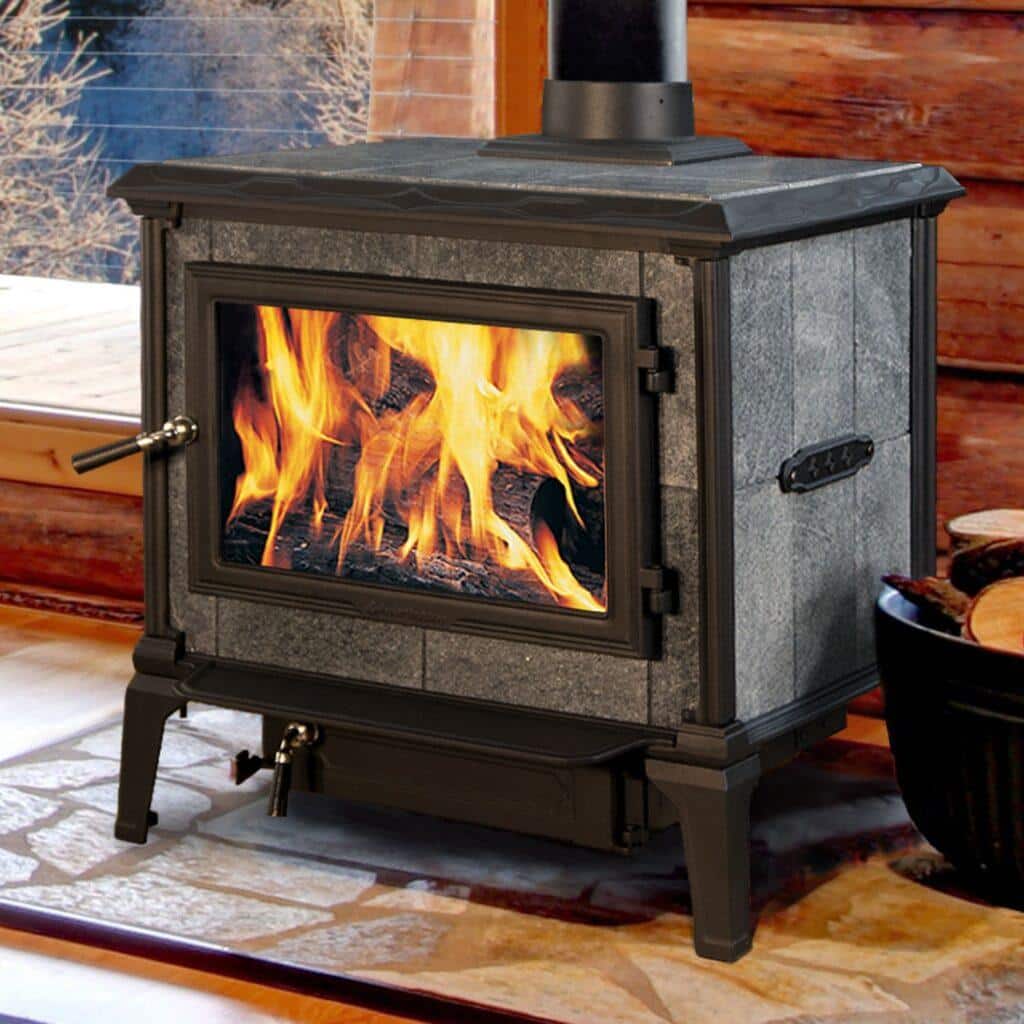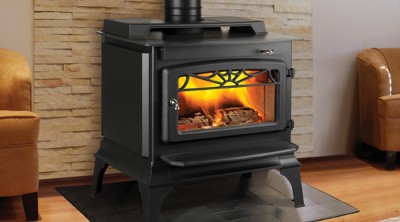We have a cabin in Michigan that’s entirely heated with a cast-iron, wood-burning stove. It wasn’t long after we installed it that we came face-to-face with the realities of heating a whole house with one, wood-fired heat source. Some rooms were too hot, some were too cold. This motivated us to find a “Goldilocks” solution and see if we could get the heat distribution “just right.”
1. The heat-powered fan
It didn’t take us long to discover a variety of small fans that are powered by heat from the stove. These are made from heavy metal and are designed to rest on the top of the stove. The combination of heat rising from the stove causes the fan blade to rotate and direct a gentle draft of warm air in a specific direction. We actually have three of them pointing toward key points in the first floor of the house, like the bathroom, the kitchen and the front porch, although the front porch is often closed off at the height of winter.
We also bought an electric-powered fan that sits under the stove, but we wanted to make sure we had good off-grid solutions. Unfortunately, while the heat-powered fan made some improvement for air circulation, we still had a problem upstairs.
2. The stovepipe option
Our wood-burning stove is vented up a brick chimney before the stovepipe reaches the second floor. We considered re-routing the stovepipe through the ceiling so we could have some of the metal surface exposed upstairs, but it was a big job and it would have meant redesigning the second floor layout. It’s an option, but that’s up to you.
3. Passive vents
A neighbor of ours used something called a “passive vent” system in his cabin, and he said it worked surprisingly well so we decided to give it a try. A passive vent is essentially a hole in the ceiling leading to the second floor. It’s sealed off with a metal grate both on the floor upstairs and in the ceiling below. The inner space between the floor boards and the ceiling is surrounded in duct work, so the heated air rises up through the vent into the room above.
These Solar Backup Generators Deliver 4 Times More Power Than Other Models! [3]
One word of warning. Make sure you know what’s in your ceiling and below your upstairs floorboards before you make any significant cuts. You could have electric power running through the floor, or you could have plumbing. A stud finder and a metal detector are a good place to start, or you could cut a very small hole and peak inside with a flashlight before you make a larger cut.
We ended up cutting two passive vents to the upstairs rooms and they both worked great. The warm air would rise from the vents, and my brother actually cut a couple of small plywood squares that he laid over the grills to act as a baffle for when it got too hot upstairs. We later installed grates with baffles built in and they still work fine.
4. The chimney insert heat reclaimer
The chimney insert is essentially a square box a little larger than your stovepipe that is inserted into the stovepipe and pointed in the direction you want to direct the heat. It works to not only extract more heat from your stove, but given its directional option you can do a little better directing heat toward a certain area.
World’s Smallest Solar Generator … Priced So Low Anyone Can Afford It! [4]
If your stovepipe continues through upper floors, you can install an insert on both the first and second floor to capture and direct heat.
Conclusion
All of these options work best if the wood stove is centrally located in the home. The heat-powered fans work pretty well, but it’s a modest draft of heat. You might also consider keeping all of the doors open upstairs so any hot airflow rising from the stove has a chance to find its way up there. If you have an upstairs room that just doesn’t seem to get the heat and you’re looking for an off-grid solution, the passive vents may be the way to go.
What advice would you add on distributing heat through a home? Share your advice in the section below:
Are You Prepared For Blackouts This Winter? Read More Here. [5]


